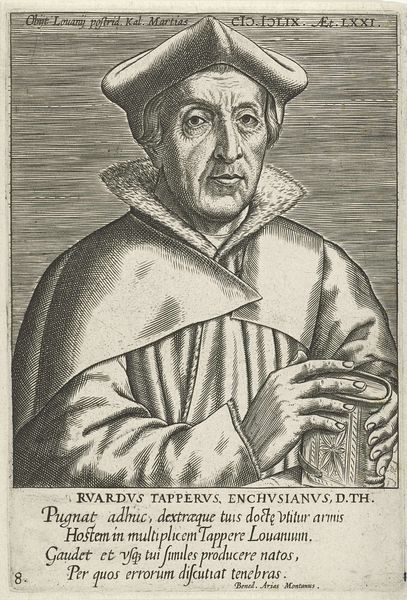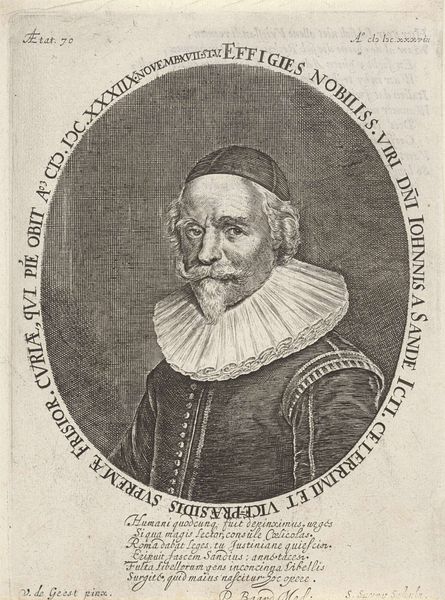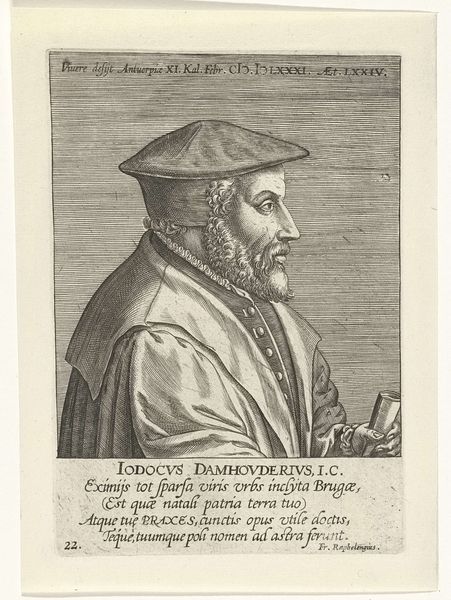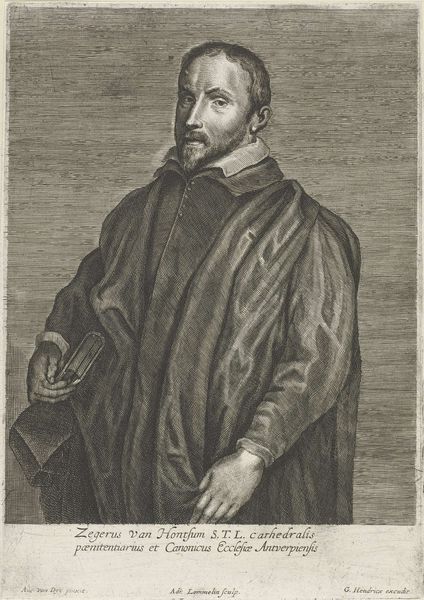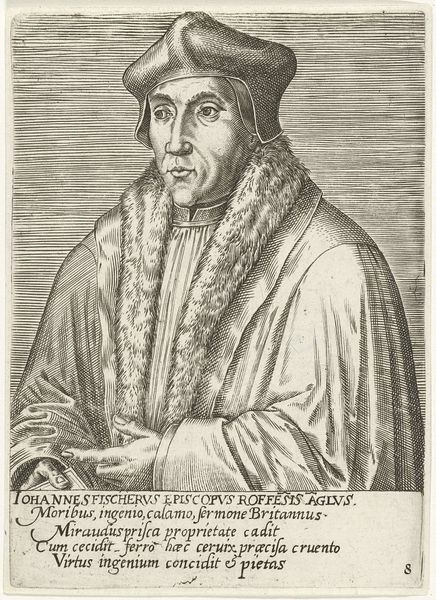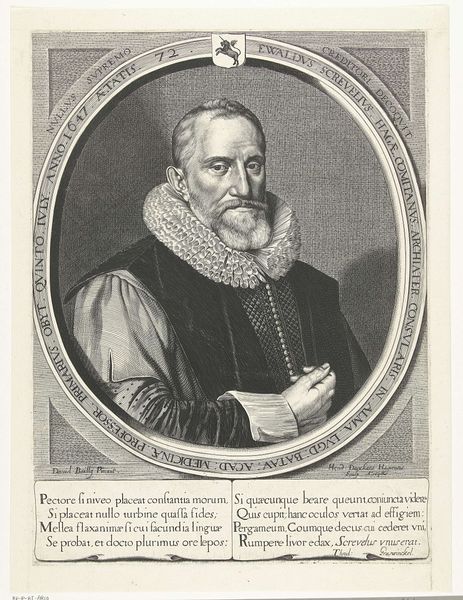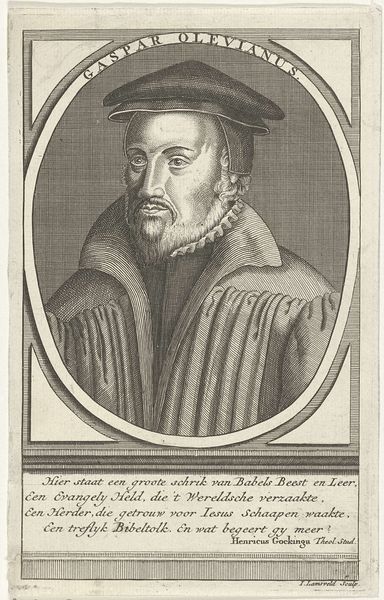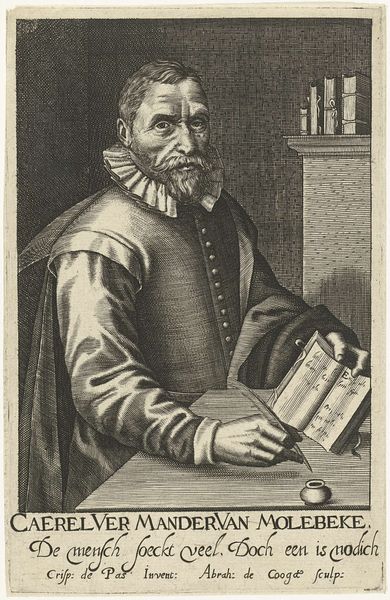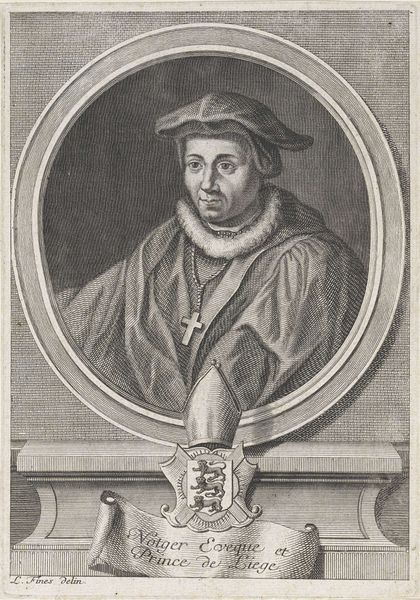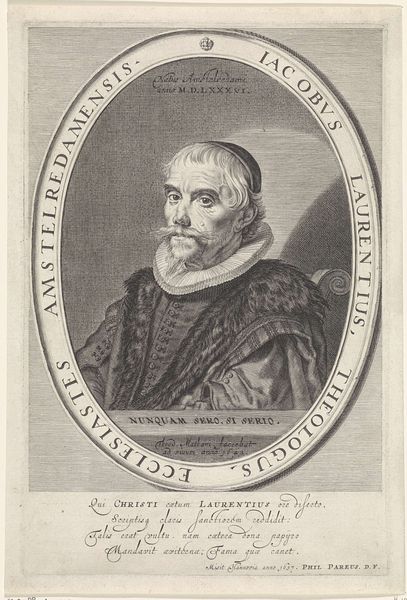
Dimensions: height 266 mm, width 178 mm
Copyright: Rijks Museum: Open Domain
Curator: This engraving, likely made between 1647 and 1685, presents a "Portret van Johannes Bugenhagen" by Frans Allen. Its visual impact, considering its age, is quite striking. Editor: Indeed! The contrast between light and shadow gives the subject such gravitas. The textures, from the fur trim to the crisp lines of the lettering, all contribute to a very formal, almost austere mood. Curator: I agree about the formality, it’s unavoidable, given the social conventions of the era that portraiture, especially engraved portraits such as this, aimed to document status and achievements, primarily for distribution within specific social and intellectual circles. The text inscribed celebrates Bugenhagen's roles as professor, pastor and reformer from Wittenberg and Lubeck. Editor: It also lends the artwork this graphic, bold structure. But I’m curious about the process: How was it actually made? Were preparatory drawings involved? The sharp precision of the lines is amazing. Curator: Engraving is an intaglio printmaking technique that involves using a tool called a burin to carve lines directly into a metal plate. The incised lines hold the ink, and when pressed against paper, they transfer the image. Regarding process: Each line cut into the metal necessitates thoughtful planning since mistakes can ruin the plate, which is connected to broader workshop practices and divisions of labor. Consider too, the access to, and the trade in specialist tools that such a refined image demands. Editor: It gives a depth to this individual. His furrowed brow and pursed lips suggesting serious intellect, framed in such strong visual architecture. But what about his connection to the reformer’s tradition – did that carry social weight? Curator: Certainly. Placing Bugenhagen in the Reformist pantheon cemented not only his personal legacy, but it also spoke volumes to later audiences about which religious and political faction he supported. Also the printed and reproducible nature of the engraving allowed the propagation of Reformist ideologies more widely at a time when religious upheaval shaped all levels of society. Editor: Seeing this from an iconographic point of view has really shed some light for me, emphasizing its symbolic value, especially through its texture, use of light, and balance in composition. Curator: Precisely. By considering the networks of production and reception of prints such as this we not only explore a very rich aesthetic language but simultaneously come to understand this language's function as both ideological reinforcement and dissemination within a rapidly transforming world.
Comments
No comments
Be the first to comment and join the conversation on the ultimate creative platform.

